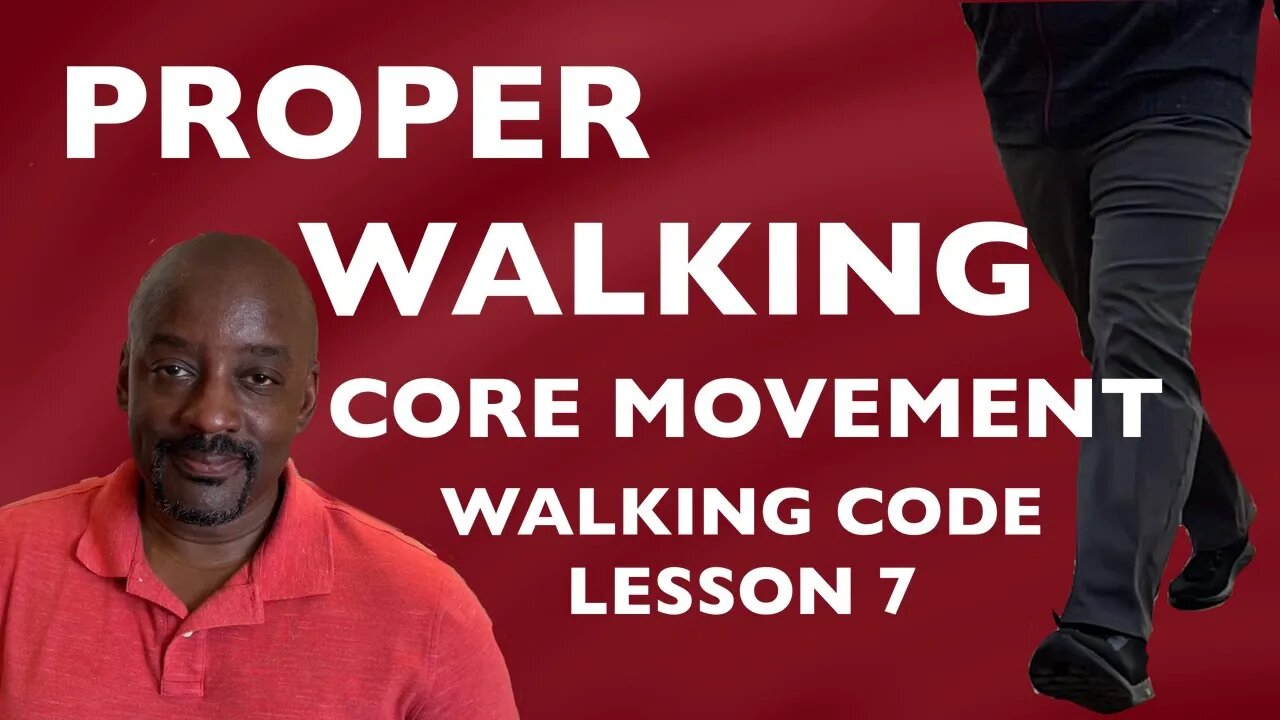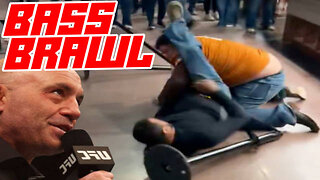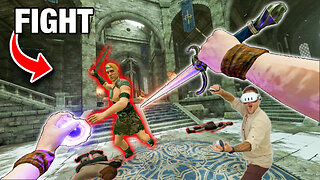Premium Only Content

How to Walk Properly on Level Ground Walking Code Lesson 7
How to Walk Properly on Level Ground. This is lesson 7 of The Walking Code and Martin Movement Method. Lessons-4-6 will be posted later. This lesson follows directly from lessons 2-3 which deal with the hip flexion Core Techniques that are used in walking on flat ground. Lessons 4-6 will deal with hip extension from the glutes which we will see in walking uphill and up stairs.
T13 Principles of Tai Chi and how I used them to develop the Walking Code
1. Sinking of Shoulders and Dropping of Elbows
2. Hollowing of Chest and Rounding of Back
These principles, especially number 2 are the clue to the rotation of the upper torso, or thoracic spine. We could use either the upper abdominal muscles to rotate in a forward direction in front of the body or the upper back muscles to rotate in a backward direction behind the body. If we chose to rotate with the upper back muscles, the chest would be rounded and the upper back hollow. This is what we often see in an exaggerated military posture. This is not correct posture for movement. Hollowing the chest and rounding the back indicates that proper movement is in front of the body from the upper abdominal muscles.
3.Sinking Chi down to Dan Tien
4.Lightly Pointing Up the Head
Principle 4 is a basic posture principle indicating that the spine should always have an upward intention, with no leaning forward as you will hear recommended by some people teaching how to walk or run or climb stairs.
5. Relaxation of Waist and Hip
This principle, along with another principle that indicates all movement is guided by the waist and powered by the legs, is an indication that the focus of control of all movements is in the waist and the hips. The waist is anatomically divided into upper and lower portions to rotate the thoracic and lumbar spines. This gives us the three primary elements of the core that I describe.
6. Differentiate Between Empty and Full: Yin and Yang
Most Tai Chi literature and teaching simplifies the idea of empty and full to describe when we are balanced on one leg. The standing leg would be full and the free leg would be empty. I don't think this explanation holds because it applies only in a very limited number of situations. The principles should apply all the time. I believe empty and full refer to which side of the torso and hips are active. Since we move with rotation, only one side is active at a time, otherwise they would be turning against each other, blocking the rotation. When we extend or flex with the left hip, the right hip is passive or empty. When we turn forward with the left side of the waist, the right side is empty, or passive. When we extend the left knee, the right knee is moving passively, or is empty. This is especially important to understand during the final phase of a step forward. The rear knee is actively extending. The swing leg knee appears to be extended, but it is empty. There is no energy extending it. This prevents it from being locked in extension when the heel hits the ground, which would be dangerous.
7. Coordination of Upper and Lower Parts of the Body
This principle indicates that the movements of the upper body, or core, must be coordinated with the lower body, or the hips and ankles. This was the first indication to me that each of the Core Techniques has a specific coordinated action of the ankles and knees.
8. Using the Mind Instead of Force
Force means muscles resisting either internal or external forces. When we tighten our biceps or abs, we are using the force of one muscle against another in our own bodies. Instead, we should focus on using the mind to direct movement, not opposition of muscles against each other. The more we understand of the precise movements needed, the less force or unnecessary muscle contraction is needed.
9. Harmony Between Internal and External
10. Connecting the Mind and the Chi
11. Find Stillness Within Movement
12. Movement and Stillness Present at Once
Principles 11 and 12 tell us that the core is active at all times. Even when we stop, we are still using one of the 8 energies, or the Core Techniques as I describe them. When we are standing still, we are using the Core Technique of Lift just as much as we are during the swing through of the step.
13. Continuity and Evenness Throughout the Form
This final principle is explaining how to practice putting each of the Core Techniques together. The goal of fluid movement is to transition seamlessly from one movement to the next so there is no break in the flow.
Summary: Putting these principles together with basic anatomic knowledge leads to the clear meaning that we control our movements directly from the three elements of the core. Simple math then tells us there are only 8 unique combinations available if you are using the core in a rotational manner. 2 directions of the upper waist x 2 directions of the lower waist x 2 directions for either hip=16/2 to remove mirror images-8.These are the Core Techniques
-
 23:22
23:22
Stephen Gardner
1 day ago🚨BREAKING: Mamdani Won and What Trump EXPOSES About It is SHOCKING!!
15.9K111 -
 1:16:41
1:16:41
Steve-O's Wild Ride! Podcast
19 hours ago $0.03 earnedAdam Ray Absolutely Kills Steve-O | Wild Ride #273
9.35K3 -
 37:22
37:22
efenigson
1 day agoWhat COVID Taught Me About Money & Control - Efrat Fenigson | Ep. 104
6.59K3 -
 1:20:56
1:20:56
Dialogue works
2 days ago $0.50 earnedCol. Larry Wilkerson: No Way Out for Israel - Iran & Russia — NATO’s Worst Fear
28.3K11 -
 10:37
10:37
TheSaltyCracker
17 hours agoMassive Brawl Breaks Out in Bass Pro Shop Over Bathroom
34.1K154 -
 16:40
16:40
Actual Justice Warrior
15 hours agoSydney Sweeney REFUSES To Apologize For Being White
19.5K42 -
 1:57:23
1:57:23
MG Show
20 hours agoTrump Makes Announcement; Erika Kirk 1st Interview
27.7K25 -
 8:01
8:01
MattMorseTV
13 hours ago $0.45 earnedTrump just GUTTED the ENTIRE SYSTEM.
75.9K90 -
 20:02
20:02
Nikko Ortiz
14 hours agoBlades And Sorcery Is The Ultimate Medieval Fantasy
18.4K6 -
 2:12:18
2:12:18
Side Scrollers Podcast
21 hours agoSide Scrollers VTuber TAKE OVER with Kirsche, Rev Says Desu & DarlingStrawb | Side Scrollers
100K17